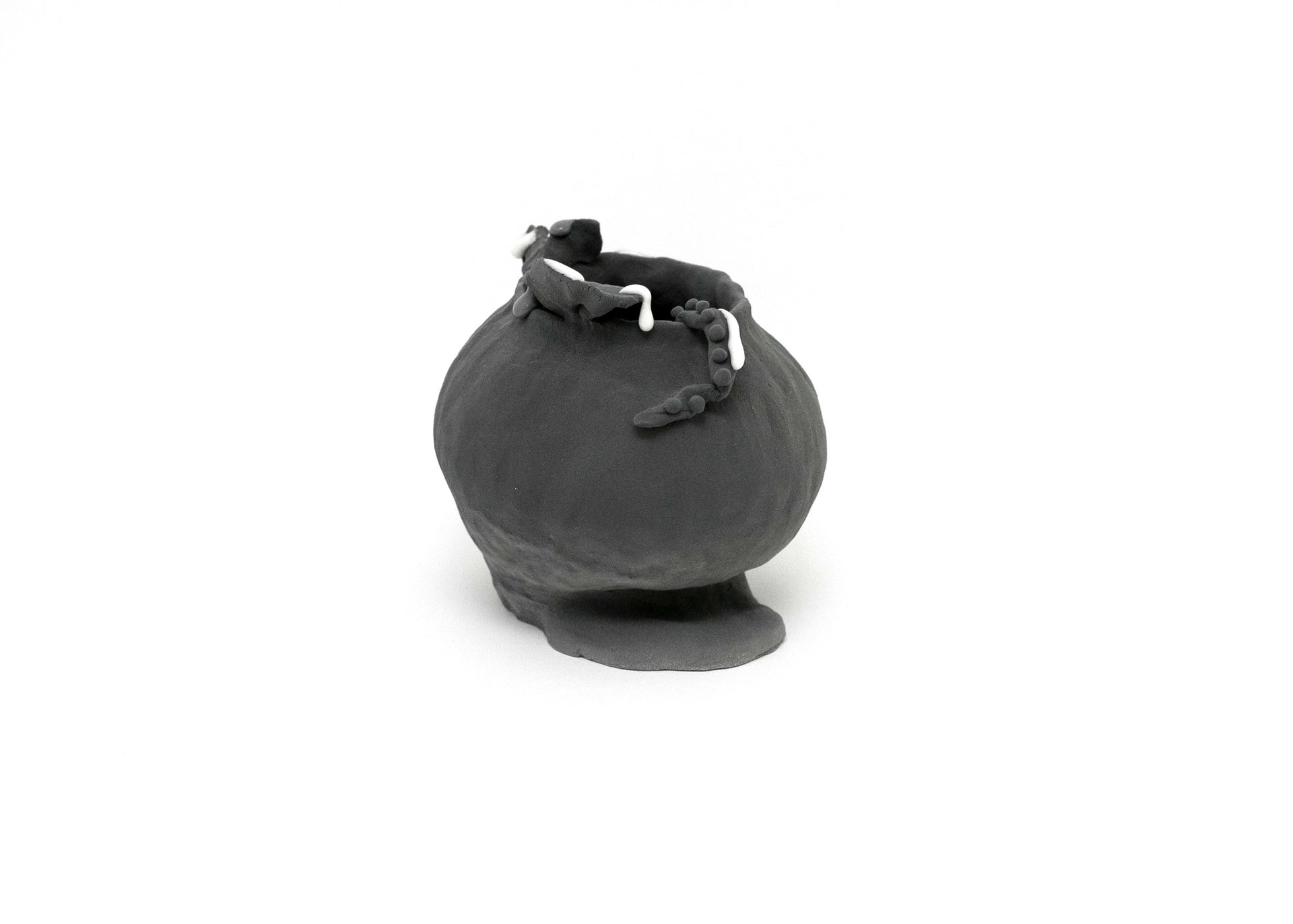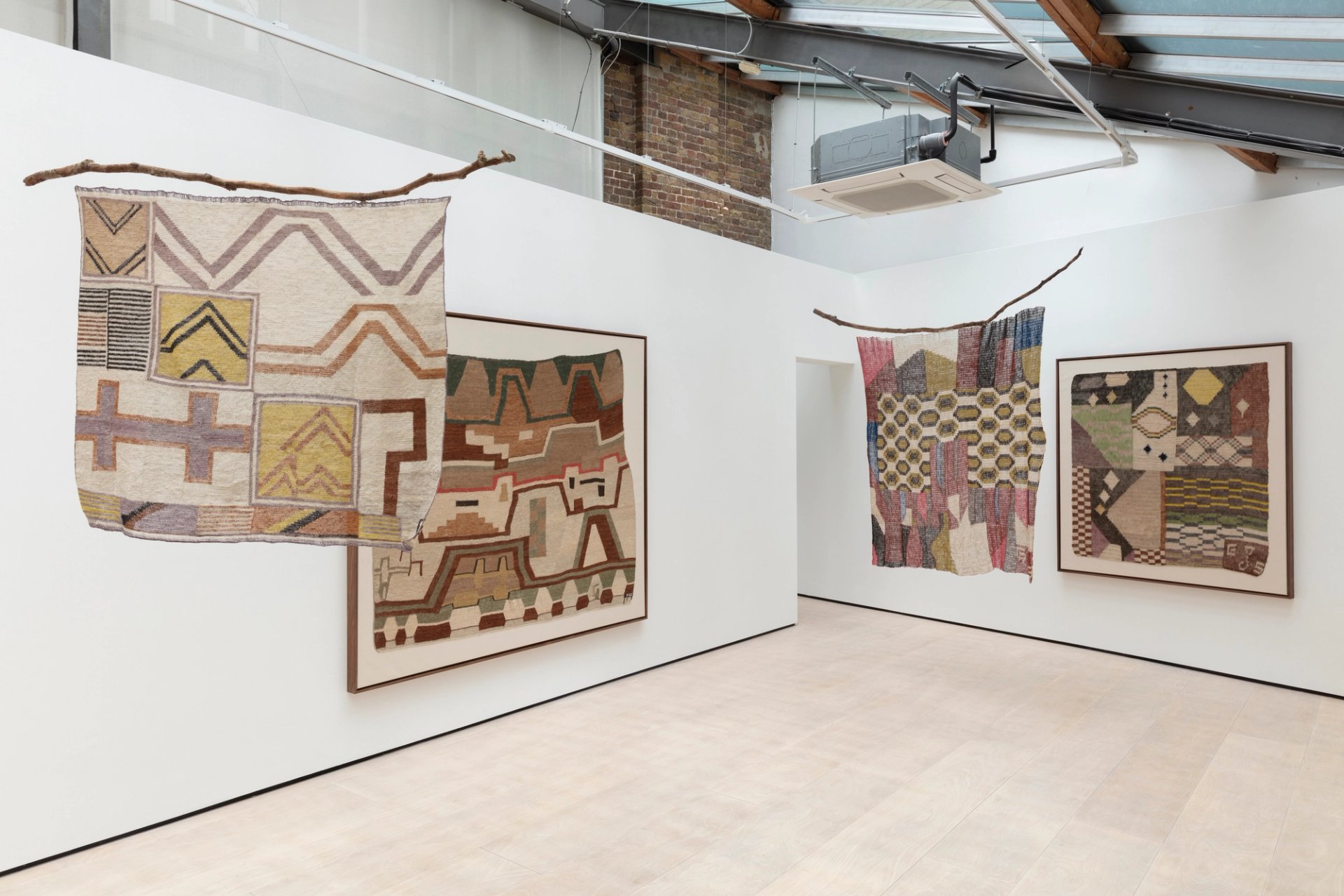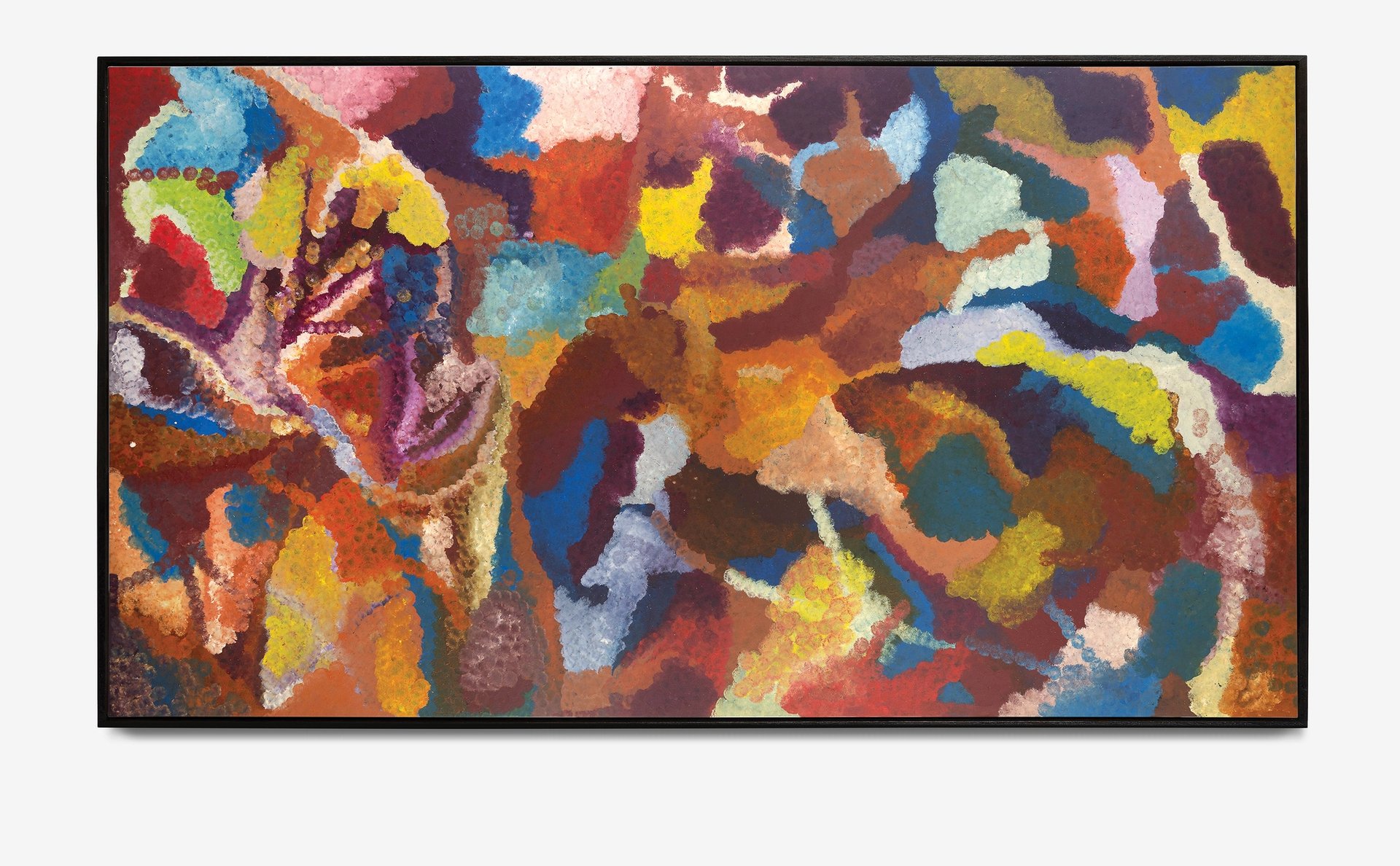Reflecting a broader revival of curiosity in folklore, mythology and conventional processes and rituals, a number of exhibitions at London Gallery Weekend this 12 months present artists trying again, not ahead, for inspiration—a refreshing antidote to our AI-dominated world.
Some artists are indigenous to a specific tradition—the aboriginal artist Emily Kam Kngwarray, for example—whereas some are debtors, comparable to New Zealand-born Francis Upritchard, a self-confessed “magpie” who collects influences from historical mythology to science fiction.
Listed below are 5 exhibits of feminine artists that deliver tales and traditions from Argentina to Australia to South Korea to the streets of London.
Anna Perach’s Uncanny Valley (2025), comprised of Axminster yarn and synthetic leather-based
Copyright The Artist
Anna Perach: A leap of sympathy
Richard Saltoun, 41 Dover St, W1S 4NS, till 24 June
Born in Ukraine however now based mostly in London, Anna Perach takes her exhibition theme from the work of the thinker Henri Bergson, who stated that we should take a “leap of sympathy [faith]” with the intention to empathise with and relate to others. Perach’s tufted, wearable sculptures, drawings and glass sculptures, set out throughout Saltoun’s three Mayfair areas, discover how historical folklore and storytelling can affect our private narratives and sense of self, and society’s thought of id and gender.
Perach’s protagonists usually play with the thought of the “monstrous” physique—witches and the like—and one physique of labor central to this exhibition is The Uncanny Valley, a creepy procession of 12 tufted heads main guests via the gallery. Some function a number of or outsized eyes, some none, taking part in with the thought of gaze and id. The work takes its inspiration from the Russian folktale Vasilisa the Lovely, by which a sequence of heads encompass the witch Baba Yaga’s home within the forest.
A leap of sympathy will journey to East Gallery in Norwich in September 2025.

Francis Upritchard’s Any Noise Annoys an Oyster (2024), in balata rubber and bronze
Courtesy of the artist and Kate MacGarry, London
Francis Upritchard: Sing Siren
Kate MacGarry, 27 Previous Nichol Road, E2 7HR, 6 June-12 July
Francis Upritchard’s uncanny, darkly playful sculptures draw on all method of inspiration—historical artwork, folklore, the pure world and science fiction. “I’m magpieing,” she as soon as advised The Artwork Newspaper, “I’m at all times mixing.”
The New Zealand-born artist’s new present with Kate McGarry contains figurative sculptures in rubber, bronze, ceramic, textiles, stone and glass, alongside works on paper, made initially for her latest exhibition at Kunsthal Charlottenborg, appealingly titled Any Noise Annoys an Oyster. Her works have a approach of evoking every part and nothing particularly—types harking back to mythological animals, dinosaurs, and historical creatures. “I attempt to embrace how incorrect reminiscence will be,” Upritchard says in a press release. “I’m working the fabric in reference to human our bodies, however remembered human our bodies. For me it’s fairly vital, the inaccurate and the not trying good or simply so.”
Mythological inspiration is robust in these new works—comparable to Medusa, with eels not snakes for hair, and Sing Siren, references the legendary girls who would lure sailors with their track—as are Classical references, within the types of ceramic vessels adorned with scenes from Greek mythology.

Soyoung Hyun, Shadow (2024)
Courtesy of the artist
Soyoung Hyun: Invitation to a Ritual
IMT Gallery, Unit 2, 210 Cambridge Heath Street, E2 9NQ UK, till 29 June
This, the primary UK solo present for Paris-based Soyoung Hyun, contains two our bodies of associated work by the South Korean artist: her Purification field and Shadow sequence. Each our bodies of labor take care of reminiscence and the blurred line between presence and absence, drawing on private and cultural rituals in addition to Japanese ceremonial vessels and Beninese ceramics.
The Purification field sequence consists of clay vessels adorned with volcanic stones from Mount Etna, serving as reminiscence packing containers, to carry and externalise previous traumas, obsessions and habits. The Shadow sequence, in the meantime, takes its inspiration from Korean folklore, by which shadows are seen as proof of life. Hyun makes use of clay to sculpt the shadows of vases and flowers into strong type, giving permanence and weight to one thing ephemeral and intangible.

Set up view, Claudia Alarcón & Silät: Choreography of the Creativeness at Cecilia Brunson Tasks
Pictures by Lucy Dawkins, courtesy of Cecilia Brunson Tasks
Claudia Alarcón & Silät: Choreography of the Creativeness
Cecilia Brunson Tasks, 3G Royal Oak Yard, Bermondsey St, SE1 3GE, till 25 July
Cecilia Brunson, initially from Chile, champions the work of South American artists in a really private approach, from a gallery connected to her household residence in Bermondsey. For London Gallery Weekend, Brunson is exhibiting the work of Claudia Alarcón, an indigenous textile artist from the Wichí group of northern Salta in Argentina. The artist can be a part of the Silät collective, led by Alarcón and made up of of 100 multi-generational girls weavers from the Alto la Sierra and La Puntana Wichí communities.
Their textiles, maybe acquainted to you from their inclusion in final 12 months’s Venice Biennale, are woven from fibres of the native chaguar plant, a fabric and follow integral to Wichí tradition—the weavings are thought to speak unstated ideas and the messages of goals and the unconscious. Their geometric designs are a part of part of a powerful custom in South America, and the gallery factors out that Anni Albers collected chaguar textiles from Salta, utilizing their design and weaving technique as inspiration for her personal work.

Emily Kam Kngwarray, Alhalker (I), 1992© Emily Kam Kngwarray/Copyright Company
Emily Kam Kngwarray: My Nation
5 Hanover Sq., W1S 1HQ, 6 June-8 August
Now recognised as a large of Australian portray, Emily Kam Kngwarray (round 1914–1996) will obtain her first solo present at London’s Tate Fashionable this July. To coincide, Tempo will open an exhibition of the Aboriginal artist’s work at its London gallery, in collaboration with the Melbourne-based gallery D’Lan Up to date.
Kngwarray was an Elder of the Anmatyerr individuals of Australia’s Northern Territory and custodian of Alhalker, her ancestral nation, which runs deep via all of her work. Her work additionally embody the thought of the Dreaming, a foundational idea of Aboriginal tradition which encompasses their religious beliefs, lived worldview and creation tales.
Though Kngwarray solely started portray critically in 1988 when she was in her 70s, she produced an infinite physique of round 3,000 works within the eight years earlier than she died. The group of works on present at Tempo chart her growth from early natural types to the minimalism of her final works. It’ll additionally embrace modern batik works by Aboriginal and Torres Strait Islander artists impressed by Kngwarray.
• The Artwork Newspaper is a media associate of London Gallery Weekend









